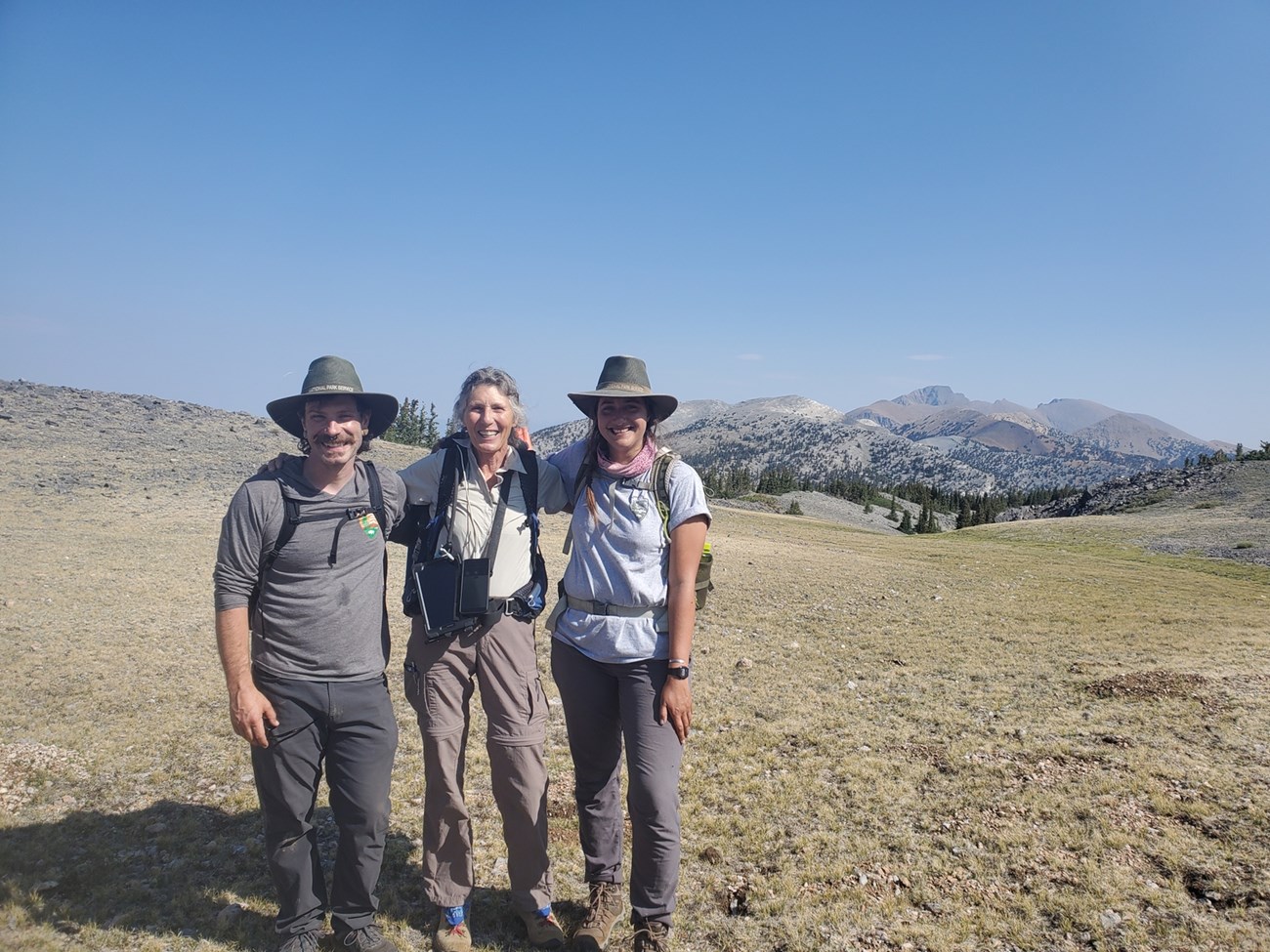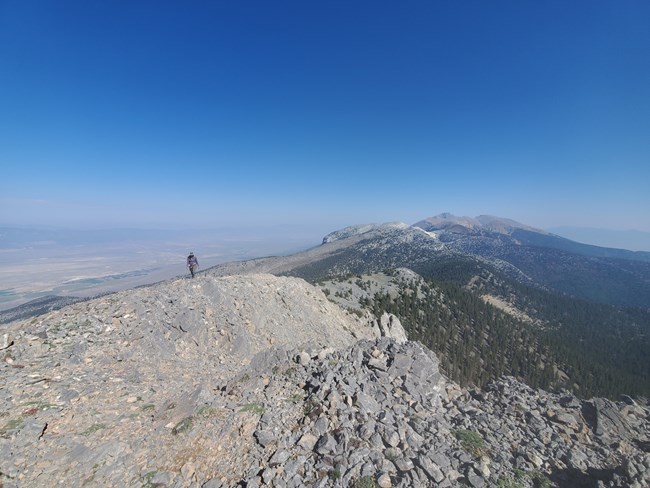Part of a series of articles titled The Midden - Great Basin National Park: Vol. 21, No. 2, Winter 2021.
Article
Detecting and Forecasting Change in High Elevation Species
This article was originally published in The Midden – Great Basin National Park: Vol. 21, No. 2, Winter 2021.

primrose, Nachlinger catchfly, and Holmgren’s buckwheat
NPS Photo by Kelsey Ekholm
In collaboration with the University of Nevada, Reno (UNR) and botanist Jan Nachlinger, the Park initiated a project to assess current and future distributions of endemic alpine plants. Alpine surveys focused on finding four high elevation, endemic forbs found in eastern Nevada: Holmgren’s buckwheat (Eriogonum holmgrenii), Pennell beardtongue (Penstemon leiophyllus var. francisci-pennellii), Nevada primrose (Primula cusickiana var. nevadensis), and Nachlinger catchfly (Silene nachlingerae).
Fifteen years have passed since initial surveys were completed (2004-2006), providing an opportunity to document changes in distribution and model possible changes in the future. All four target species are considered At-Risk by the Nevada Natural Heritage Program. Like other high elevation species, these plants are particularly vulnerable to climate change because they have evolved to a specific set of growing conditions and have a limited area for vertical migration. Using past and current distribution data and modeling future distributions will help the Park manage these unique species and understand how climate change could affect alpine ecosystems.

NPS Photo by Kelsey Ekholm

NPS Photo by Kelsey Ekholm
Last updated: February 6, 2024
